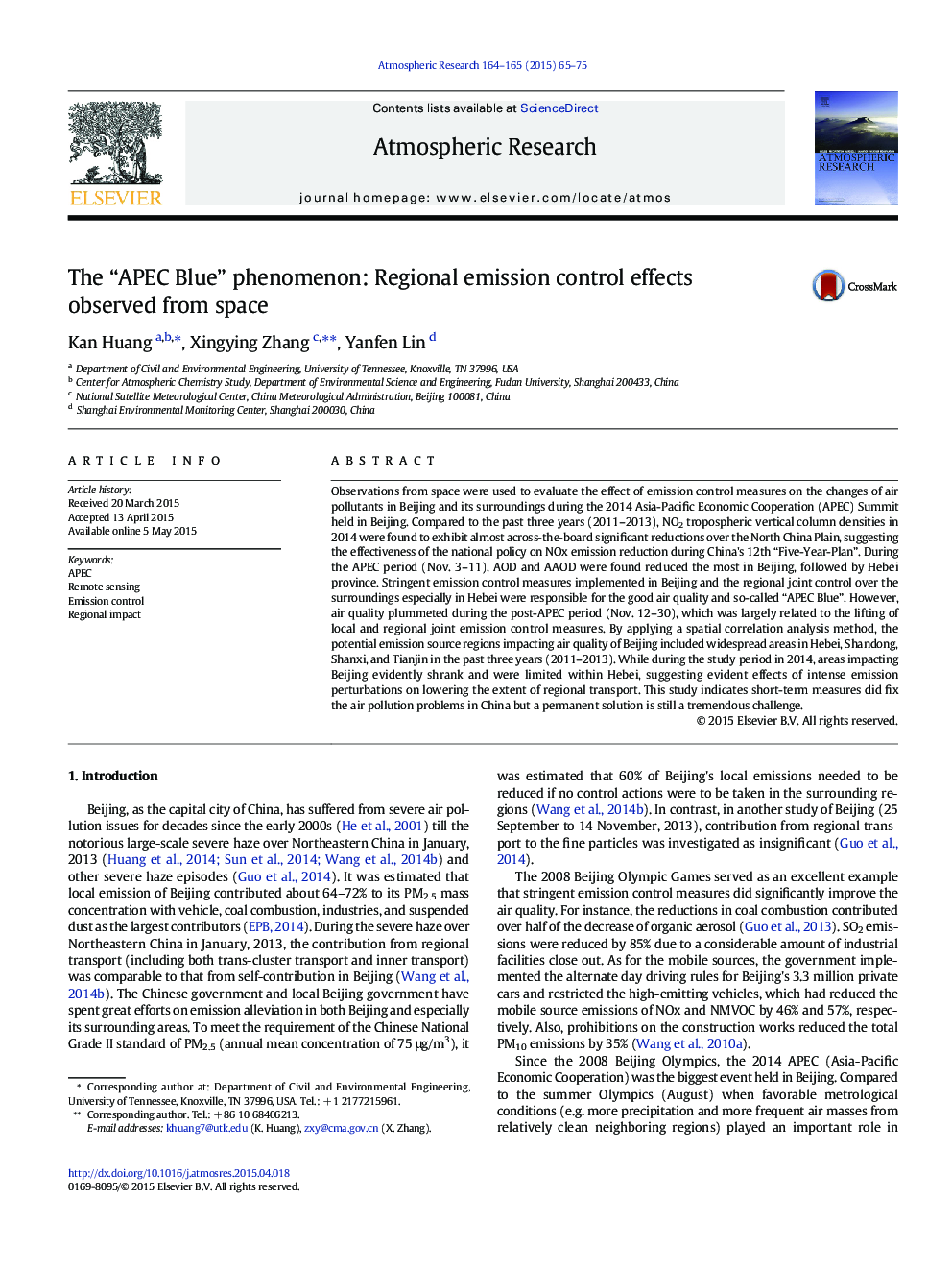| Article ID | Journal | Published Year | Pages | File Type |
|---|---|---|---|---|
| 6343189 | Atmospheric Research | 2015 | 11 Pages |
Abstract
Observations from space were used to evaluate the effect of emission control measures on the changes of air pollutants in Beijing and its surroundings during the 2014 Asia-Pacific Economic Cooperation (APEC) Summit held in Beijing. Compared to the past three years (2011-2013), NO2 tropospheric vertical column densities in 2014 were found to exhibit almost across-the-board significant reductions over the North China Plain, suggesting the effectiveness of the national policy on NOx emission reduction during China's 12th “Five-Year-Plan”. During the APEC period (Nov. 3-11), AOD and AAOD were found reduced the most in Beijing, followed by Hebei province. Stringent emission control measures implemented in Beijing and the regional joint control over the surroundings especially in Hebei were responsible for the good air quality and so-called “APEC Blue”. However, air quality plummeted during the post-APEC period (Nov. 12-30), which was largely related to the lifting of local and regional joint emission control measures. By applying a spatial correlation analysis method, the potential emission source regions impacting air quality of Beijing included widespread areas in Hebei, Shandong, Shanxi, and Tianjin in the past three years (2011-2013). While during the study period in 2014, areas impacting Beijing evidently shrank and were limited within Hebei, suggesting evident effects of intense emission perturbations on lowering the extent of regional transport. This study indicates short-term measures did fix the air pollution problems in China but a permanent solution is still a tremendous challenge.
Related Topics
Physical Sciences and Engineering
Earth and Planetary Sciences
Atmospheric Science
Authors
Kan Huang, Xingying Zhang, Yanfen Lin,
